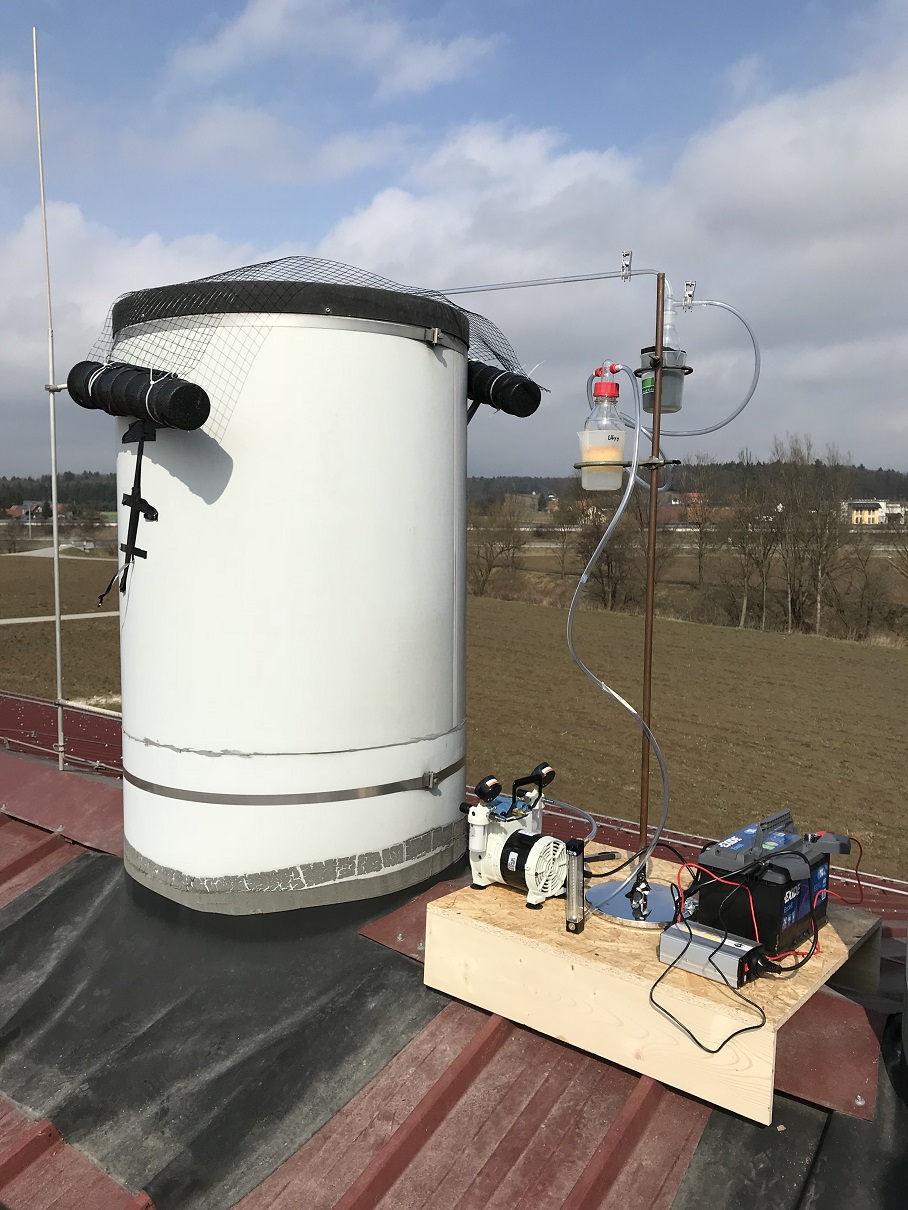Bioaerosols are generally airborne particles of biological origin - in particular, these are accumulations of particles in the airspace containing bacteria, fungi, viruses, pollen, cell wall components or metabolic products (e.g. mycotoxins).
The procedure
As part of the three-year project period, two fattening pig farms and two fattening poultry farms will be visited nine times by a measurement team and bioaerosol emissions (directly in the exhaust chimney) and immission (at defined intervals in the area around the stables) will be recorded; What is relevant here is the detection of bacteria and fungi, which are defined as key parameters. Within the project, the Animal Husbandry Systems, Technology & Emissions department is responsible for the acquisition of the companies, the time management of the company visits, the support of the emissions measuring point and the collection of relevant peripheral parameters (housing system, manure management, number and weight of the animals housed on the survey days, etc.), responsible.
Goal of the project
The aim of the project is to generate specific Austrian data sets that reflect the status quo of potential emissions and allow an assessment of whether and to what extent the neighborhood surrounding pig and poultry farms is contaminated with bioaerosols from animal husbandry.
Basis for forecast calculations
In the context of agricultural construction and complaint procedures, the topic of bioaerosols - in addition to the assessment of odor, dust, harmful gas and noise emissions - is becoming increasingly important. Luquasta forms a basis for future, realistic forecast calculations, among other things by deriving emission factors for key germs. The emission factors determined serve as a basis in the GRAL dispersal model for calculating the areal distribution of the focused bacteria and fungi in the target area; What is particularly important here is the convergence of the results of the calculation model with the bioaerosol data determined in the field. The modeling using GRAL is carried out by Department 15 of the Stmk Office. State government.
The last on-site surveys will take place on the four project farms in summer 2020; the final report is planned for spring 2021.








